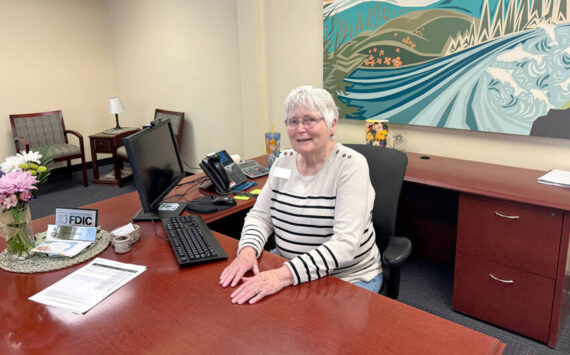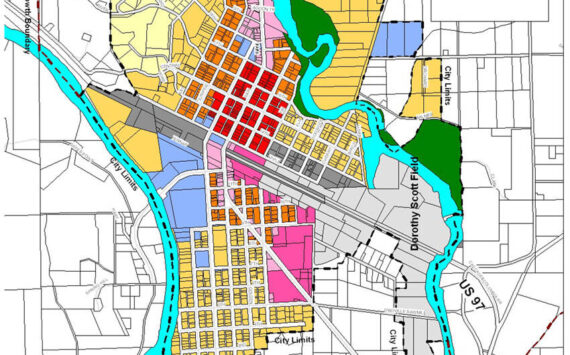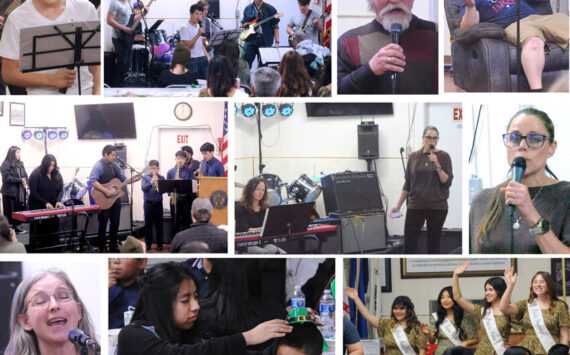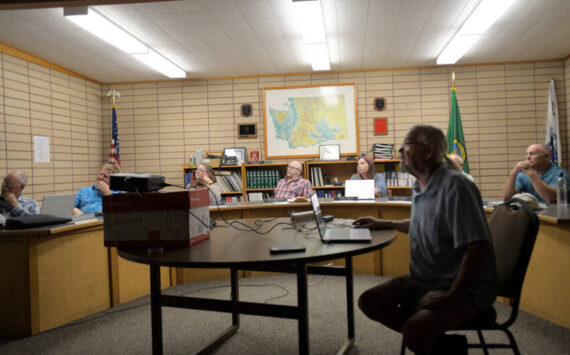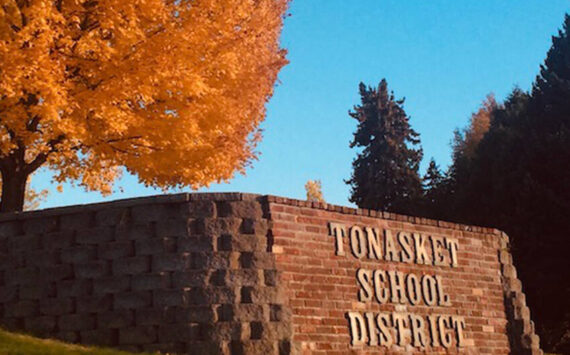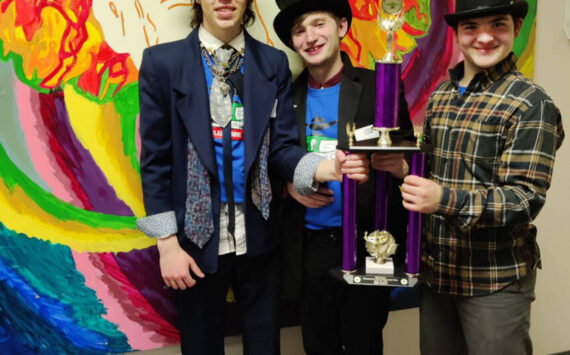KELOWNA, B.C. – Proceeds from last fall’s Osoyoos Lake Water Science Forum will be split between representatives working on each side of the border to improve lake water quality.
The money, $25,000, will be equally divided between the Town of Osoyoos and the Oroville-based Lake Osoyoos Association.
“Osoyoos Lake, and all those who depend on its clean water, are the beneficiaries of funds to improve the lake’s water quality thanks to last fall’s successful Osoyoos Lake Water Science Forum,” announced Corrine Jackson, a spokeswoman for the Okanagan Basin Water Board, a Canadian group.
An international forum was held in Osoyoos last September to discuss the future of the lake, which straddles the Canada/U.S. border. The discussion brought together scientists, townspeople, agencies and politicians from the U.S. and Canada. The forum steering committee – with representatives from the International Joint Commission (IJC), Environment Canada, the Okanagan Basin Water Board (OBWB), Washington State’s Okanogan Conservation District, the Town of Osoyoos, and the Lake Osoyoos Association – voted to direct the proceeds of the conference to water quality improvement projects for the lake. The Town of Osoyoos will receive $12,500 to provide grants for projects on the Canadian side, and the Lake Osoyoos Association (a registered non-profit) will manage $12,500 for projects on the U.S. side. This is a one-time funding opportunity.
“The committee was very pleased to be able to direct the funds this way,” said Anna Warwick Sears, Executive Director of the OBWB. “Osoyoos Lake spans both sides of the border, so any actions that are taken on the lake affect the people, the animals, and the natural areas of the lake as a whole. It was a unanimous decision that the funds be shared to improve lake quality on both sides of the border, recognizing that all will benefit from the work.”
Interest in cross-border collaboration is especially high this summer, according to the OBWB, as both countries enter into public consultation for the renewal of the Osoyoos Lake Operating Orders, under the Boundary Waters Treaty which expire in February 2013. The Orders spell out rules of operation for lake levels in summer and winter, and how these change in drought years. A report with recommendations from the International Osoyoos Lake Board of Control will be posted on the IJC website within the coming month, and public meetings are scheduled for July 24 and 25 in Oroville and Osoyoos, respectively.
The report is expected to address drought and flood control issues, climate change concerns, and the need to protect the health of the sockeye salmon run. A full 80 percent of the sockeye returning to the Columbia River Basin (U.S. and Canada) are born in the Okanogan system, according to Jackson.
Meanwhile, the Lake Osoyoos Association has been trying to get a handle on the eurasian milfoil problem on the lake. The plant thrives as temperatures start to rise and clogs boat props and impacts swimming and beach areas. In a recent newsletter Ford Waterstrat writes that harvesting, a technique preferred on the Canadian side of the lake, does not work as it doesn’t kill the plant and each small part of the plant that is not collected can float downstream and start a new patch of milfoil. Hand pulling works better, but is time intensive and rototilling has much the same problem as harvesting.
“Using herbicides needs to be repeated and repeated much like an addiction. In fact just recently the Sandpoint Idaho city council voted not to use herbicides in Lake Pend Oreille around the Sandpoint area due to strong public response against the use of chemicals,” writes Waterstrat. “Lake residents and members of the Lake Pend Oreille Waterkeepers Association noticed that the use of herbicides in the long run was not effective. They plan to use, ‘…non-toxic, sustainable approaches rather than herbicides.'”
Toward the same end the group has received a $4000 grant from the state Department of Ecology for a weevil pilot project.
“We are moving forward with this pilot,” Waterstrat writes. “We will be purchasing 20-gallon fish tanks, tank aerators, bright lights and possibly fish tank heaters — these items are relatively inexpensive. We will be following an Army Corps of Engineers protocol for raising weevils.”
The Lake Osoyoos Association is looking for help with the project, including collecting some of the weevils that are already in the lake. There is a representative from Ecology and one from Osoyoos who will teach volunteers how to do this, according to the LOA. The association also needs people to help monitor the weevils in the fish tanks, as well as with release back into the lake after they have been propagated and multiplied. In addition, the group is looking for a space with controlled environment and electricity to set up the fish tanks.
“This will take place the beginning of July for collecting weevils and the middle of August for placing them back into our lake,” Waterstrat writes. “With your help we can carry forward with this pilot. We can judge the effectiveness of using a native weevil as a sustainable method to control milfoil and compare our results over the long run with harvesting, and herbicides treatments to selected sites on the U.S. side.”
To help email Waterstrat at fs.waterstrat@gmail.com or Mike Cantwell at mcantwell22@gmail.com.
The LOA is looking for new members and dues are $20 annually and can be paid to the Lake Osoyoos Association, P.O. Box 412, Oroville, WA 98844. Dues and donations are tax deductible.
